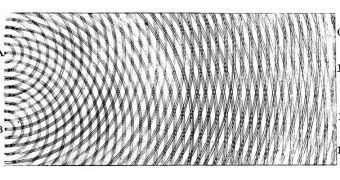Scientists at the University of St Andrews in the UK are working on developing molecular system for batteries that can be recharged by light alone. The innovation could mean that future batteries will be able to produce, and then store their own electricity.
Unlike existing photovoltaic cells, which produce electrical charges that need to be consumed as fast as possible before they decay, the new batteries will act as generators and storage devices at the same time. The research team that is developing the system is led by St Andrews expert Ifor Samuel.
The group was thus far capable of synthesizing organic semiconducting dendrimer molecules, which include cationic cyanine-based cores, that are associated with iodide anions. Whenever beams of photons rain down on the cyanine, the chemicals absorb them creating a particle known as an exciton.
This means that it has an excited states, but one that is originally neutral. When an electron is transferred from the anion, charge separation takes place, and it can then be stored. The material is able to trap the charges because they occur in a stable conformational isomer.
According to the research team, when a circuit loop is completed, all the charge moves to the contacts, which means that the entire system discharges. “For test purposes we did ten charge and discharge cycles and saw little degradation. So we expect it, like a battery, to be able to sustain far more,” Samuel says, quoted by Chemistry World.
At this point, the amounts of energy that can be produced and stored using the new methods are fairly low. Undoubtedly, over time, the team will become capable of utilizing new materials and methodologies, that would boost both the production and storage capacities of the battery considerably.
“So far it is an exciting proof of principle. However, most technologies start like that and it is reasonable to expect large improvements with further work,” he adds of the challenges still ahead.
“Although the energy and power densities need to be increased, this new idea of a battery configuration could be one of the special features to stimulate further studies on organic materials for energy-related applications,” adds Waseda University electronic materials expert Hiroyuki Nishide.

 14 DAY TRIAL //
14 DAY TRIAL //